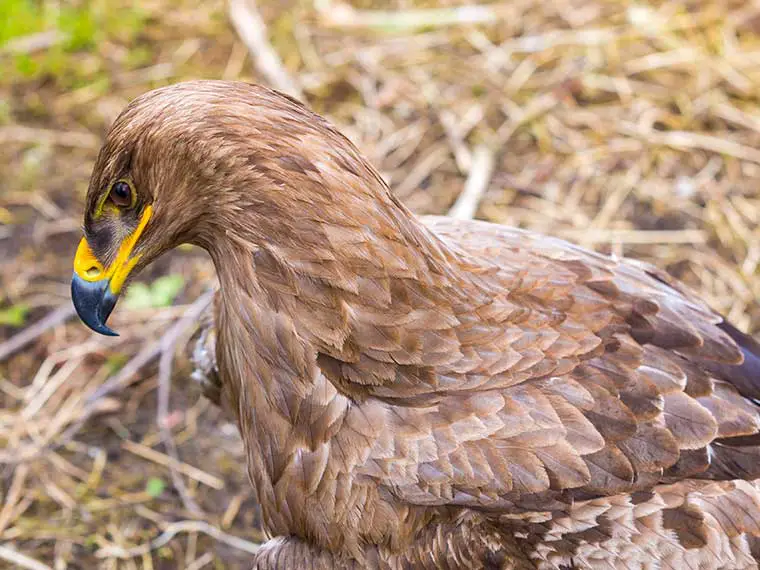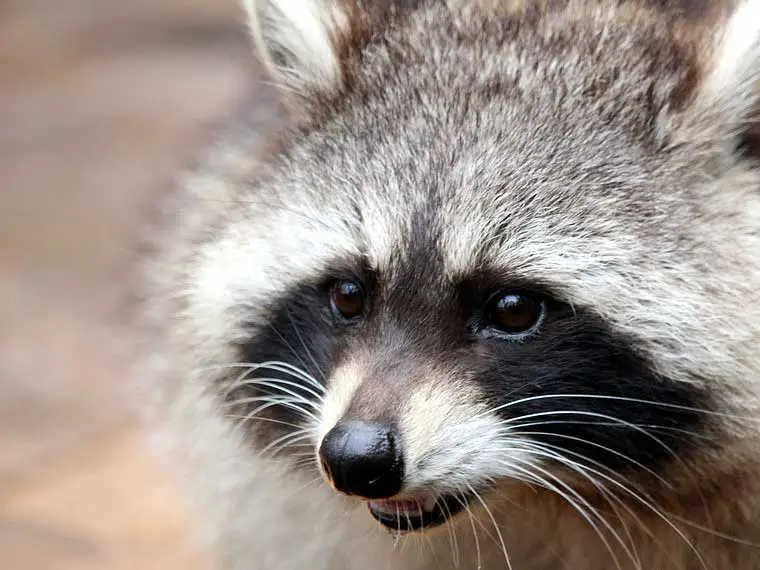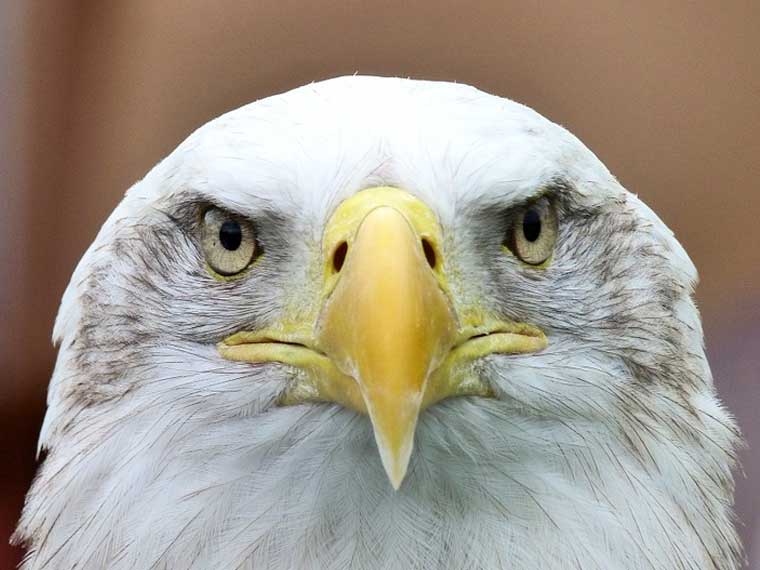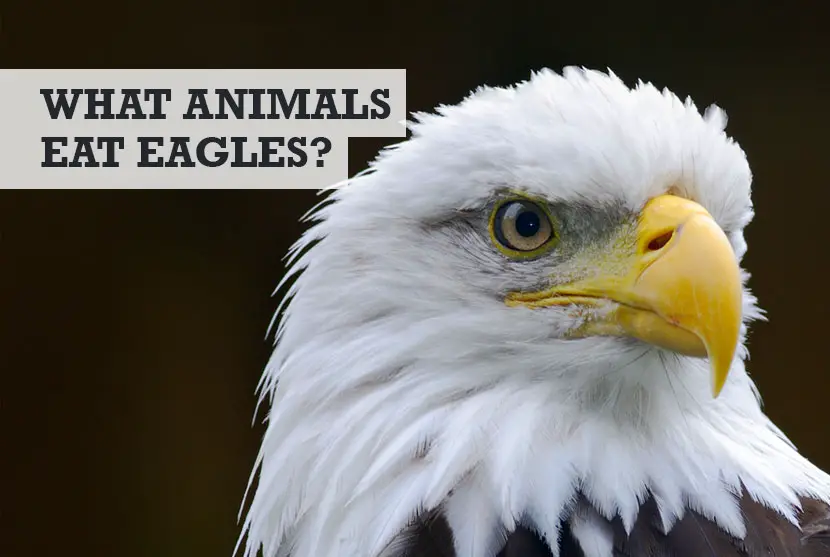Eagles are renowned as being the rulers of the sky, and there’s good reason why. Eagles are famous for their predatory prowess and are top of the food chain. As such, this means there are not many animals that eat eagles, but that doesn’t rule it out completely.
This fierce and deadly hunter can still become the hunted, particularly the youngsters or those still in the nest. Stay with me as I take you through the different animals that make eagles their meal, but first, here’s the short answer first about who eats eagles in the food chain.
What animals eat eagles? Animals that eat eagles include leopards, cheetahs, alligators, crocodiles, lions, snakes, jaguars, wolves, great horned owls, raccoons, hawks, crows, vultures, and ravens depending on whether the eagle is in the desert, rainforest, or urban areas.
I’ll categorize these animals into two different types of predators of eagles. There are animals that eat adult eagles and animals that eat young eagles, or eaglets, often straight from the nest.
What are the predators of eagles?
Eagles are not an easy target for animals, but they still do have several different predators depending on where in the world the eagle lives. Read on as I reveal to you how this powerful bird falls into a predator’s trap in places as diverse as deserts, rainforests, and near cities.
Animals that eat adult eagles (and how they manage to)
Adult eagles will typically be a very hard-earned meal for ground predators. These eagles enjoy what we call “jungle superiority”.
There are no animals that actively prey on adult eagles. Animals that kill and eat adult eagles are opportunistic hunters, rather than being how you would imagine the classic predators of eagles.
To clarify, these ground predators only attack and eat an eagle when given an easy opportunity to do so. The animals that will eat eagles in the food chain when the chance arises are:
- Lions
- Jaguars
- Leopards
- Cheetahs
- Wolves
- Alligators
- Crocodiles
- Vultures
Here are some of the opportunities that these wild animals take advantage of:
1. Injured and sick eagles are vulnerable to predators
Typically, these predators will pounce when an eagle has become injured, weak, and more vulnerable to a predator. Common accidents that can befall eagles include collisions with structures like power lines and power poles.

Eagles can also get injuries from prey with good defense features like sharp teeth and tough claws. A single swipe from another animal can leave the eagle nursing deep wounds.
There are also environmental factors that can lead to eagles becoming the prey of other animals lower down in the food chain.
For example, eagles become unwell and may die because of lead poisoning. Aquatic environments contaminated with lead make fish toxic. Eagles love feeding on fish. When an eagle consumes lead-infected fish, it suffers lead poisoning complications.
Eagles can also get sick and vulnerable to predators when they feed on poisoned remains of dead animals.
Injured or sick eagles will opt to recover on the forest grounds. When weakened, eagles cannot escape a predator. The ground predators that eat wounded and sick eagles are lions, jaguars, wolves, cheetahs, and leopards.
Whilst vultures are not the kind of bird can kill an eagle, they will eat the remains of dead eagles.
2. Eagles eating on the ground are vulnerable to predators
Not all eagles feed on their prey from the treetop. An eagle may find its prey too heavy to fly around with. In such situations, the eagle will release its bulky prey in the air and fly down to finish its meal on the ground.
Ground predators grab this opportunity to ambush, kill and eat the adult eagle.
3. Eagles seen near water bodies are vulnerable to predators
An eagle may be busy aiming for its next meal around water sources and miss noticing a ground predator approaching.

Alligators and crocodiles are also notorious for attacking eagles near water bodies. You’ve probably seen videos of crocodiles suddenly jumping out of the water to catch unsuspecting prey – that can happen to eagles too.
Eagles will often avoid flying over water to avoid predators, particularly open water like the sea.
4. Eagles caught unawares in their habitat are vulnerable to predators
Most eagle species build their habitats on tall, mature trees. These trees offer them protection against unfavorable weather like rain, snow, and strong winds.
But this habitat is not guaranteed to keep an adult eagle safe from tree-climbing predators like leopards. Check out the video below of a leopard pouncing on an eagle standing on a branch, killing it instantly.
5. Animals that eat eagles on a revenge mission
A hungry eagle, or one looking to feed its starving offspring, will do whatever it takes to provide, including whisking away the young one of fierce predators like cheetahs, lions, and leopards.
These predators don’t take the eagle’s baby-snatching habits lightly. Once a predator notices the eagle responsible for its young one’s death, it responds with aggression.
In another video below, you’ll see how a provoked female leopard avenges the death of her cub, killing and eating an eagle.
Animals that eat baby eagles (and how they manage to)
Babies of the species can offer a sumptuous meal for these animals who eats eagles in the food chain as nest predators.
- Hawks
- Raccoons
- Ravens
- Crows
- Snakes
- The great horned owl
Eaglets stay in nests under the care of their parents until they’re old enough to fend for themselves. Most times, eaglets are in the company of their protective parents. Sometimes, adult eagles must leave their young ones behind.
Adult eagles are forced to make this tough choice when they run out of food for their little ones. They’ll leave for hunting and only return to the nest with food. Eagles also love to expand or improve their nesting territory.
So, aside from food hunting, eagles will leave the nest to source more nest-building materials.
Developing the nest site is a team job. The male and the female eagle do the nest renovation together: they bond more during these renovation activities.
As you can imagine, the nest predators listed above find it hard to snatch the young eagles when the parents are around.
Of course, they’d experience a nasty confrontation with eagles guarding their babies. Adult eagles are territorial in keeping their young ones safe.
When the parents are absent though, the nest predators have a field day and become the predators of eagles in the nest. It’s their time to steal and eat the eaglets. Let’s look at each nest predator of eagle offspring.
1. Hawks can eat eagles
Hawks and eagles are the perfect opponents. Put them in an enclosed space and watch them fight each other to death. Perhaps this has got to do with the eagle’s greedy behavior of stealing food from other birds like the hawk
“The eagle is a bird of bad moral character. He does not get his living honestly.”
Benjamin Franklin, Founding Father of the United States
A hawk will invade a nest with no security and take off with an eaglet to enjoy its meal at a quiet location. Pay attention to how this hawk on YouTube charges at an eagle’s nest and wins itself a meal.
So, in answer to the questions, yes hawks do eat eagles, particularly the young when in the nest.
2. Raccoons can eat eagles
Racoons are known to eat eagles. These intelligent mammals are a nuisance to eagles’ nest sites. They climb up trees to eat unguarded eaglets. A raccoon will even search around the nest for leftovers before exiting.

3. Crows can eat eagles
Crows are notorious intruders of eagles’ habitats. Because of their mobbing tendency, the crows have an advantage. They’ll fly in large numbers to attack and eat many unprotected eaglets at a go.
See this video showing a group of noisy crows scaring away an eagle and taking over its nest.
4. Ravens can eat eagles
Ravens will closely watch the adult eagle leave its eaglets behind. A raven won’t hesitate to snatch a quick meal from the eagle’s nest.
5. Snakes can eat eagles
Several snake species can climb even the widest trees. They gain access to eagles’ nests on treetops with their unique movement ability.
Eaglets left alone are not lucky because snakes will eat them and any eggs in the nest.
6. The great horned owl can eat eagles
This beastly owl species has a fierce fighting attitude that enables it to bully the parents and snatch their eaglets.
Great horned owls are also silent hunters. They’ll quickly attack the nest without being heard. By the time the eaglets’ parents realize, the great horned owl will be far away enjoying its meal.
Handy Hint: It is illegal to own a bald eagle, which probably explains why they have such a high price on illegal black markets.
Related questions about eagle predators
Golden eagles, harpy eagles, and bald eagles occupy the top spot in the food chain. Can you recall the food-chain chart you learned in biology class? The chart that points out what eats what in the ecosystem?
All eagles, including golden, harpy, and bald eagles, don’t truly have natural predators. They’re only hunted down when the opportunities arise as I’ve already explained.
Animals that eat golden eagles, harpy eagles, and bald eagles include lions, wolves, cheetahs, alligators, crocodiles, leopards, and jaguars.
Birds of prey such as hawks, ravens, crows, vultures, and owls will also devour injured or dead golden eagles, harpy eagles, and bald eagles.
Here’s some more detail…
What animals eat bald eagles?
Due to its size, the bald eagle has few natural predators. But, as with all eagles, animals that eat them will do so typically with the young and those still in the nest.
The types of animals that eat bald eagles (preying on the nest) are raccoons, ravens, black bears, wolverine, bobcat, Black-billed Magpies, hawks, crows, gulls and owls. I have also read reports of arctic foxes preying on bald eagle ground nests.

Another threat to bald eagles, although not in the classic sense of a predator in the food chain, are parasites. Things like bow flies can infect the young.
Handy Hint: Did you know that bald eagles can carry up to half their own body weight in prey? Here’s what animals they can pick up.
What animals eat golden eagles?
Similarly, golden eagles also have few predators, but their nests, eggs, and young offspring can be a risk from other animals in the food chain. The type of animals known to eat golden eagles when young are other kinds of eagles and hawks, bears, cougars, and wolves.
The deadliest predator of golden eagles is… man. Pets on Mom.com say:
The main predator of golden eagles are humans. Pioneering farmers throughout the Eastern United States worried about the huge birds harming their livestock. To prevent it, they shot the birds, leading to a drastic decline in the population of that area. Hunting golden eagles was also prevalent among farmers throughout Europe, causing declining populations and in some countries, extinction.
What animals eat harpy eagles?
Harpy eagles have “near threatened” extinction status. They share the top of the food chain in their habitat with jaguars and anacondas, so nothing in the jungle will really eat harpy eagles. Unless of course, it’s the young, or an injured harpy eagle.
What animals eat eagles in the desert?
Certain eagle species prefer open dry habitats like deserts, where they can hunt freely.
Snakes, desert foxes, and birds of prey like hawks, vultures, ravens, crows, and owls eat injured or dead eagles in the desert.
What animals eat eagles in the rainforest?
Lions, wolves, cheetahs, leopards, tigers, and jaguars will eat forest-dwelling eagles.
Birds of prey like hawks, ravens, crows, and owls will also attack and eat dying eagles in rainforests.
Conclusion
Whilst most eagles are too high up the food chain to be eaten by other animals, it doesn’t mean they aren’t at risk. Over the last hundred years, their species has been affected by overhunting, habitat loss, and pesticide use. This means many are now facing extinction.
And, if you didn’t already know, the answer to who kills eagles in the food chain, is probably “humans”.
You might also like…
- Here’s how you can encourage a bald eagle to nest in your yard
- What do bald eagles like to eat in winter?
- Why do bald eagles have white heads and not bald?
Image in header licensed via Storyblocks.com.

